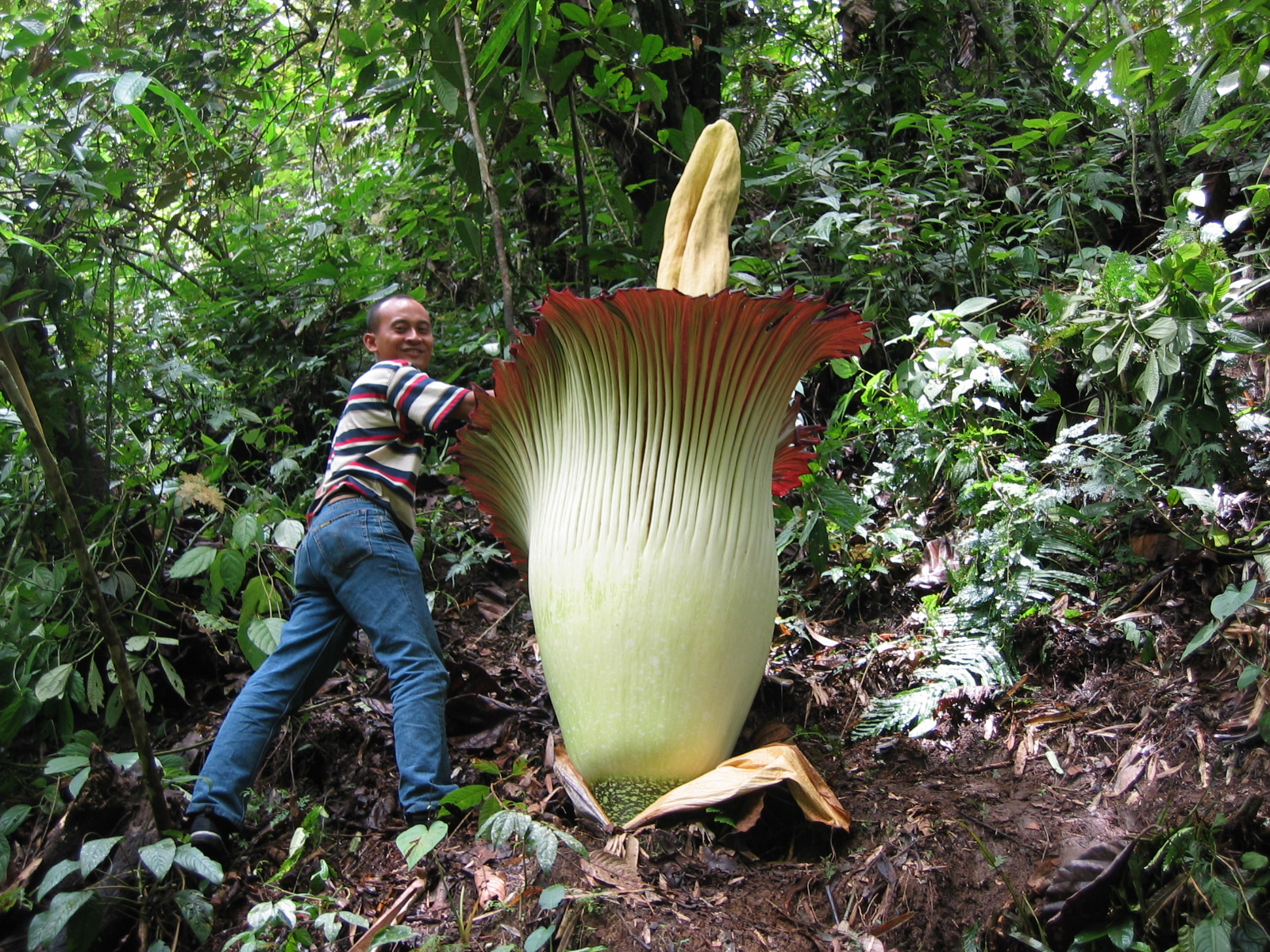Imagine a flower the size of a dining table, a fleshy, speckled bloom emitting a pungent odor that attracts carrion flies. This isn't science fiction, but the reality of the Rafflesia arnoldii, known in Indonesian as "padma raksasa" – the largest individual flower on Earth. Its existence in the rainforests of Sumatra and Borneo is a testament to the incredible biodiversity of Indonesia.
What is the largest flower in Indonesia? The answer, unequivocally, is the Rafflesia arnoldii. This extraordinary botanical wonder is a parasitic plant, lacking roots, stems, and leaves in the traditional sense. It exists as a network of threads within the tissues of its host vine, the Tetrastigma, only revealing its magnificent bloom when it's ready to reproduce.
The discovery of this giant flower captivated the world in the 19th century. Sir Stamford Raffles, founder of Singapore, and botanist Joseph Arnold encountered this remarkable species during an expedition in Sumatra in 1818. The flower's scientific name, Rafflesia arnoldii, commemorates their contribution to its discovery. Since then, the Rafflesia arnoldii has become an iconic symbol of Indonesia's natural heritage.
The Rafflesia's life cycle is a fascinating story of parasitism and adaptation. Its seeds are thought to be dispersed by small mammals that are attracted to the decaying flower. Once a seed finds a suitable host vine, it penetrates the vine's tissues and develops over several years before finally producing a cabbage-like bud that eventually blossoms into the giant flower we recognize.
The Rafflesia arnoldii plays a vital role in the rainforest ecosystem. While its pungent smell might be off-putting to humans, it attracts carrion flies which are crucial for pollination. This ensures the continuation of the species and contributes to the overall health of the rainforest. However, the Rafflesia faces significant threats, including deforestation, habitat loss, and poaching. Protecting this botanical wonder is critical for maintaining biodiversity in Indonesia.
The Rafflesia arnoldii is more than just a large flower; it's a symbol of Indonesia's rich biodiversity. Its conservation is paramount, requiring coordinated efforts to protect its habitat and educate local communities about its importance.
One significant challenge facing Rafflesia conservation is its parasitic nature. Cultivating the plant outside its natural habitat is extremely difficult, making ex-situ conservation efforts challenging. Therefore, protecting its existing habitat is of utmost importance.
Indonesia's commitment to conservation is crucial for the survival of the Rafflesia arnoldii. Efforts to establish protected areas and raise awareness about the importance of this unique species are vital steps toward ensuring its continued existence for future generations.
Advantages and Disadvantages of Rafflesia arnoldii Tourism
| Advantages | Disadvantages |
|---|---|
| Boost to local economies through tourism | Potential for habitat disturbance due to increased tourism |
| Increased awareness about the importance of conservation | Risk of damage to the delicate flowers by tourists |
Frequently Asked Questions about Rafflesia arnoldii:
1. Where can I see Rafflesia arnoldii? In the rainforests of Sumatra and Borneo.
2. How big is the Rafflesia arnoldii flower? It can reach up to 3 feet in diameter.
3. Why does it smell bad? The smell attracts pollinating insects.
4. How long does the flower bloom last? Only a few days.
5. Is Rafflesia arnoldii endangered? Yes, it is considered a vulnerable species.
6. Can I grow Rafflesia arnoldii in my garden? No, it's a parasitic plant that requires a specific host vine.
7. How can I help protect Rafflesia arnoldii? Support conservation organizations and educate others.
8. What is the local name for Rafflesia arnoldii? It's often called "padma raksasa".
Tips for observing Rafflesia arnoldii: Hire a local guide, respect the environment, and do not disturb the flower.
The Rafflesia arnoldii, Indonesia's giant flower, stands as a testament to the beauty and fragility of nature. Its unique life cycle, its ecological importance, and the challenges it faces highlight the vital need for conservation efforts. By understanding and appreciating the Rafflesia arnoldii, we can contribute to protecting this extraordinary botanical wonder and ensuring its survival for generations to come. Supporting sustainable tourism, advocating for protected areas, and educating others about its importance are essential steps in preserving this iconic symbol of Indonesia's natural heritage. We must act now to protect this magnificent species and the rich biodiversity it represents, ensuring that the giant bloom continues to thrive in the heart of Indonesia's rainforests.
Mastering the art of internet installation requests your guide to seamless connectivity
The art of the filipino column exploring halimbawa ng pitak o kolum
Nfl playoffs expert predictions analysis
apa nama bunga terbesar di indonesia - Khao Tick On
Taman Bunga Di Jakarta - Khao Tick On
apa nama bunga terbesar di indonesia - Khao Tick On
Wow Kecamatan di Kota Batu Ini Jadi Penghasil Bunga Mawar Terbesar di - Khao Tick On
Gambar Bunga Tercantik Didunia Terbaru - Khao Tick On
Keunikan Bunga Terbesar Di Dunia - Khao Tick On
Festival Bunga Tomohon Hadirkan Karnaval Kendaraan Hias hingga Parade - Khao Tick On
Taman Bunga Nusantara Harga Tiket Masuk Jam Bukadan Fasilitas dari - Khao Tick On
Piknik di Taman Bunga Terbesar di Indonesia - Khao Tick On
Perusahaan Makanan Terbesar Di Indonesia - Khao Tick On
Rawa Belong Pasar Bunga Terbesar di Asia Tenggara - Khao Tick On
Yuk Kenali Rafflesia Arnoldii Bunga Terbesar dan Terbau di Dunia dari - Khao Tick On
6 Tumbuhan Langka di Indonesia Yang Hampir Punah - Khao Tick On
Taman Harmoni Akan Disulap Jadi Taman Bunga Terbesar di Indonesia - Khao Tick On
12 Tumbuhan Langka di Indonesia yang Terancam Punah - Khao Tick On














